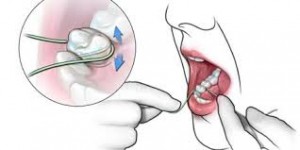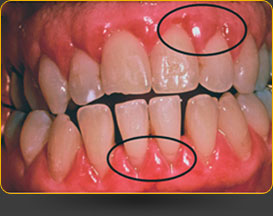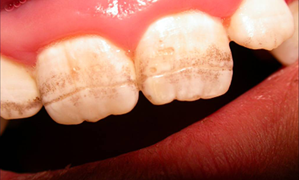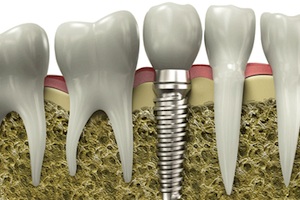These days you need to be aware of protecting yourself from environmental toxins. Environmental toxins are toxins that may be in your drinking water, in what you eat, in the air you breathe, or they enter your body through your skin when you swim in contaminated water or walk on a sandy, wet beach.
In the following blog I will address some of these issues and how we can defend ourselves against toxins.
The youngest and most vulnerable
Toxins are particularly bad for infants and premature babies. Notably, the reasons for this are the following ones: their kidney function (tubular secretion) is only 20% to 30% of that of an adult; the cytochrome P-450 enzyme system in the liver, one of the toxin eliminators is slowed down to only 25% to 50% of the adult activity and glucuronidation in the liver, another detoxification process, reaches adult levels only at the age of 3 years.
Function of liver and kidneys
It is important to realize that the kidneys and the liver are limiting the removal of toxins by way of urine and bile in the newborn. Stomach acidity in a premature has a pH of 4.7, in a full-term newborn 2.3–3.6 and in an adult 1.4–2.0. This is important to note as a lack of stomach acid increases susceptibility of newborns and infants to gastrointestinal infections and cause diarrhea. Percutaneous absorption in newborns is much higher than in adults, which makes them very susceptible to absorbing toxins through the skin (Ref.1).
Diabetes from environmental toxins
Environmental toxins can cause insulin resistance and type 2 diabetes.
Bisphenol A (BPA) is used to make polycarbonate and epoxy resins and is found primarily in food and beverage containers. People all around the world had exposure to BPA since 1957 and as a result 90% of US residents have detectable levels of BPA in their urine. Ref.2 explains that the higher the urine concentration of BPA, the higher the risk is for developing diabetes.
Persistent organic pollutants are another source of concern: pesticides and herbicides, dioxins, polychlorinated biphenyls, hexachlorobenzene, and hexachlorocyclohexane have all been found in humans. Several investigators have shown that virtually all of the risk in obese patients to develop diabetes comes from the fat-soluble persistent organic pollutants (Ref.2).
Inorganic arsenic
Inorganic arsenic is another pollutant from soil and rock, which finds its way into the drinking water. About 8% of the public water system of the US exceeds 10 mcg/L for drinking water, which is the safe limit for drinking water by the US Environmental Protection Agency’s standard. Anything above those levels is considered toxic.Ref.2 describes that people who ingest inorganic arsenic will excrete it in the urine; the highest group with arsenic in their urine had a risk of 3.58-fold to develop diabetes when compared to the lowest group. Curiously enough organic arsenic that is found in fish and shellfish is excreted in the urine unchanged and does not cause diabetes. Overall this indicates to me that nobody should consume or cook with contaminated water that contains inorganic arsenic. Reverse osmosis filters will protect you from this risk.
Other toxins around the house
Volatile organic compounds are often contained in carpets, but also in laser and inkjet printers. They are part of everyone’s life as this link shows. Physicians reported varied symptoms like irritation of eyes, nose or throat, breathing problems, headaches, loss of coordination, damage to the liver, kidneys and the brain after exposure to volatile organic compounds. Researchers noted that long-term exposure can cause cancer in animals and there is suspicion that it causes cancer in humans as well.
Air fresheners and cleaning solutions that contain ethylene-based glycol ethers and terpenes were the subject of a study that examined concentrations in the air and interaction with ozone that can also be released by some cleaners.
Fumes of chemicals can cause lung cancer
As this link shows the investigators concluded that with exposure to high enough concentrations and long enough exposures to these fumes lung cancer can be caused in cleaning personnel. They recommended to use cleaning solutions only in diluted form and to air out the premises well after cleaning. Another component of many air fresheners and cleaning chemicals is paradichlorobenzene, the same chemical that is contained in mothballs.
There have been problems with flame retardants: polybrominated diphenyl ethers, which are cancer producing; the US outlawed them in 2004, but older mattresses, upholstery, television, computer casings and circuit boards may still contain them.
Lead and mercury poisoning, and radioactive pollutants
Lead in paints was outlawed since 1978, so manufacturers have not used lead in paints anymore. Paint from buildings older than that still may contain lead. There have been serious lead poisonings in children who were gnawing on items painted with lead containing paint. Lead causes problems with your central nervous system, brain, blood cells and kidneys. Just last year a news story about lead found in fashion jewelry surfaced warning about cheap fashion jewelry from China. Lead from these items can lead to absorption through the skin and cause lead poisoning. Because of the apparent lack of regulations in China I do not put anything into my mouth or on my skin, if it originates from China.
Mercury contamination of the environment
Mercury from tuna and other predator fish: It is sad that there is pollution in oceans to the point where it has become unsafe to eat predator fish. In predator fish there is an accumulation of mercury through the food chain.
How did things develop this way? Back 100 years and more ago gold panning and the purification process of gold caused mercury to enter into rivers and allow mercury to end up in the oceans where it has since accumulated; it just sits there as it has nowhere to go.
Coal burning (yes, there is mercury in coal) also contributed to this by smoke emission from smoke stacks containing mercury vapors. Subsequently the pollution from the air returns to earth as rain pollution and drained through the river system into the oceans.
Monomethylmercury poisoning
It is monomethylmercury that accumulates in the tissue of humans. This affects many organs, such as the brain, kidneys, lungs, and skin. It causes various symptoms like red cheeks, fingers, and toes; there can be bleeding from the mouth and ears; it can cause rapid heartbeats, high blood pressure, intense sweating, loss of hair, teeth, and nails. It also can cause blindness, loss of hearing, impaired memory, and lack of coordination, disturbed speech and birth defects. You may think all mercury comes from the outside. However, silver amalgam fillings in your teeth could also be the source of mercury poisoning. It is a good idea to replace amalgam/mercury fillings with ceramic fillings.
Other marine pollution
There are many forms of other marine pollution as this link shows.
One particular concerning aspect is pollution with radioactive materials as the Fukushima disaster in Japan has shown. Following the catastrophe on March 11, 2011 radioactive material leaked into the ocean, which is described here. Dr. John Apsley II pointed out that with the explosions in Fukushima there were also several releases of radioactive pollution into the stratosphere. This pollution has subsequently traveled around the globe and has come down as radioactive rain. He has made it his ambition to help people minimize radiation exposure from nuclear accidents such as Fukushima.
Protecting yourself from toxins
Having said that pollution and toxins are problems that we are living with, how can we protect ourselves from all of that?
1. Avoid as many unsafe chemicals around you as you can. This includes checking ingredients in hair care and body care products, toothpaste, hair dyes, cosmetics, mouthwashes and underarm deodorants. I have written a blog about toxins in the bathroom and what you should watch for.
2. I would recommend you switch from a standard food to organic food. It has become unsafe to eat non-organic meats, leafy vegetables, vegetables and fruit. There are too many residues of herbicides and pesticides contained also in meat, not only in vegetables and fruit. Washing will not remove these substances, even though some merchants may tell you otherwise. Buyer beware!
Detoxification
3. Detoxification methods are available and I have reviewed them in this blog. Briefly, to remove lead and mercury you need to follow a formal intravenous chelation protocol. Depending on how many heavy metal toxins you have on board, you may need only a few treatments. At the most you may require up to 20. Here is a more conservative website stating that it would be safe to have silver amalgam fillings. I think that gold and ceramic fillings are much safer.
4. Genetically modified food is another danger as I have summarized in this blog. This is another reason why I like to stick to organic food. There is evidence that GMO food causes autoimmune diseases, infertility and chronic inflammation that can eventually lead to cancer. It may take decades to prove this, but I am not willing to be a human guinea pig.
Remove toxins from your home
5. I have mentioned in a prior blog that we live in a toxic world. You need to carefully look at your home and remove toxins. You need to assess your drinking water. A water analysis can tell you how good the water in your home is and whether there are concerns about inorganic arsenic. Usually places that sell filter systems can advise you in that regard. Your drinking water should either be pure water bottles or else reverse osmosis water from a filter system in your house.
6.Vitamins and supplements support your cell integrity and have anti-inflammatory and antioxidant effects that protect you from toxins. I discussed this in detail in my NetHealthBook under nutrition. For instance vitamin D3 in doses of 5000 IU or more and CoQ-10 are powerful anti-inflammatories and CoQ-10 is also an antioxidant and preserves mitochondrial function. High fish oil supplements (3 to 6 Grams per day) have anti-inflammatory effects and protect your cell membrane integrity. With these overlapping qualities of vitamins and supplements your body will be in a much stronger position to defend itself against the negative effects of toxins. When you take multivitamins, this translates into telomere lengthening of 5.1%. This converts into a survival advantage of 9.8 years over a lifetime). Ref. 4 explains this in more detail.
Exposure to radioactive substances
7. Exposure to radioactive substances is a scary thought, but this is becoming more and more a reality, at least for those who live close to disaster areas such as the Fukushima site in Japan or the Chernobyl site in the Ukraine. But according to Dr. Apsley II low dose radiation that we have already received in the US and in Canada following the Fukushima disaster is equally disastrous (Ref.3). Many of the vitamins and supplements I have mentioned are also cell and mitochondria protective and will help with DNA repair following radiation damage, but you must avoid sugar and other refined carbs and starches to reduce the oxidative effect on cells and on LDL cholesterol to prevent premature aging and cell death. Ref. 3 contains a lot more detail about this and explains what specific supplements you can take to detoxify your system. This will remove radioactive elements that function as free radicals in your body. There are specific antidotes for radioactive iodine-129 and iodine-131, radioactive cesium-137 and others.
Conclusion
Many people shrug their shoulders when they hear that pollution has an effect on their lives. They feel that they are powerless and cannot do anything about this. The truth is far from this! Above I mentioned seven points that you can follow to counter toxins. On top of that you can get politically active and urge your government representative to create a nuclear free zone in your area. Ref. 3 contains compelling evidence why this is so important not only for us now, but for future generations and the future of mankind.
Accountability of quality of food and beverages
We need to hold those who provide us with food and beverages accountable for the quality of these. Shrugging it off is not good enough. Get involved. Buy organic food. Avoid the section in the grocery store where they sell sugar and high carb foods. It’s good for your own health, but it will collectively change the mentality of the grocery store owners where you shop. Suddenly they notice that they are now left with the comfort foods that were big sellers in the past. This new trend will result in cheaper prices for healthy foods and more availability of organic food.
References
1. Shannon: Haddad and Winchester’s Clinical Management of Poisoning and Drug Overdose, 4th ed. © 2007 Saunders. Chapter 18:“Toxicologic Issues in the Neonate”.
2. Rakel: Integrative Medicine, 3rd ed. © 2012 Saunders. Chapter 31: “Insulin Resistance and the Metabolic Syndrome”.
3. Dr. John W. Apsley II : “Fukushima Meltdown & Modern Radiation: Protecting Ourselves and Our Future Generations” © 2011. Temet Nosce Publications, Sammamish, WA 98075
4. Xu, Qun, Parks, C.G., DeRoo, L.A., Cawthon, R.M., Sandler, D.P. and Chen, H. Multivitamin use and telomere length in women. American Journal of Clinical Nutrition 89 (April 2009):1857-63. Full text (PDF): http://ajcn.nutrition.org/content/89/6/1857.full?sid=9aab0e13-b4d2-42ad-b44c-15cffc6771c3
Last edited March 8, 2014










